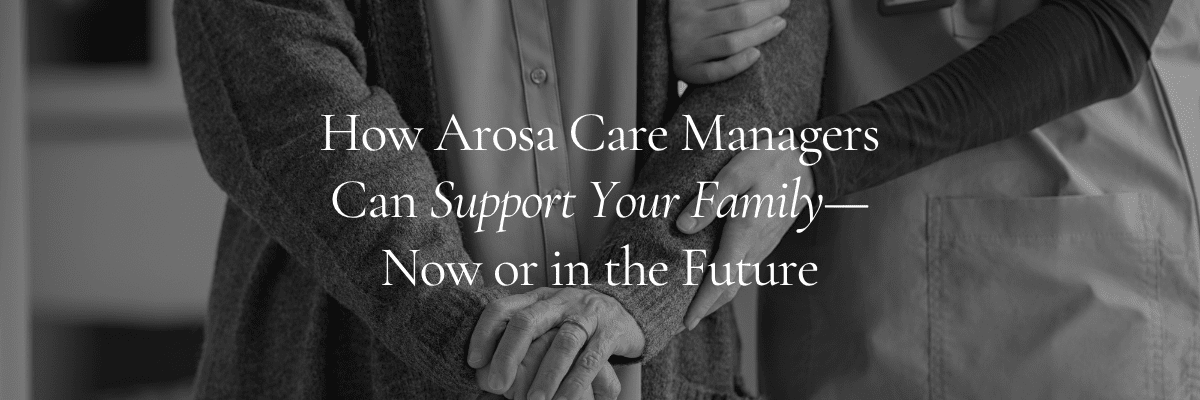It’s a Sign: How Your Clients are Showing You They Need More Help
Many of us have the good fortune of serving clients over a span of years. We live through various life events with them and, in many cases, we ride the long wave of decline with them as they age, endure setbacks, stage rallies and – sometimes – cross a cognitive or physical bridge that makes fully independent life impossible.
How convenient it would be if the cognitive and physical changes that trigger a need for assistance would just appear one day and wave a flag for the rest of us to see. Strokes, falls, fractures and other boldly announced reversals do, in fact, signal to us that a change of circumstances may be warranted. Often, though, the slide from full independence to more needful conditions is subtle and slow, and quite frequently it is hidden. The client, perhaps owing to pride or fear or a hope that the situation will pass, is prone to keeping small lapses and new deficiencies under wraps.
There are signs, however, that care is needed. In cases where care is already provided, there are signs that the care may not be of the right variety or size.
The possible scenarios in which these signs are offered are endless, but here are examples of the ways your clients might be showing you that they need more – or different – help:
- Bills and taxes are unpaid, or paid incorrectly;
- A change of subject in the conversation cannot be managed – the client routinely changes the subject back to something familiar or tells a joke when more complex topics are raised;
- The client calls and repetitively asks the same questions or wants to review the same material;
- A sudden uptick in charitable giving is seen, or checks are being written to unknown parties for unknown services;
- Uncharacteristically risky behavior appears, such as gambling, excessive spending, inviting strangers into the house, etc.
- Grooming and hygiene show a decline – odors are present, clothes are stained, the client appears in the same clothes at more than one appointment or visit;
- Weight loss is registered for no apparent reason;
- There are bruises, abrasions and other minor injuries, the origins of which the client cannot recall or is reluctant to share;
- Medical issues present that may stem from inaccurate dosing of medication;
- Pills linger in various compartments of the pill box, or prescriptions that should last 30 days are gone too soon;
- Repeated hospitalizations occur, and/or discharge plans are not followed;
- The hospital is preparing to discharge the client and the family reports they are unstable and not at all ready to go home;
- Unnecessary goods and services are purchased from telephone solicitors;
- Neighbors are paid cash or given elaborate gifts for routine assistance, rides or small household chores;
- The house appears unkempt – flyers pile up on the sidewalk, the landscaping is overgrown, grass is uncut, mail is not retrieved from the box;
- New “friends” appear and take an influential role in decision-making;
- A visit to the house reveals the presence of not just the caregiver, but members of the caregiver’s family (who might also be living there);
- A visit to the house shows that the caregiver is not there, or the client and the caregiver are often out of the house for repeated, unexplained periods of time (i.e. the caregiver has other revenue streams and is taking the client out to attend to business transactions, hair appointments or other self-serving interests unrelated to the client for whom they are paid to care);
- The client’s gradual loss of strength has made it impossible for them to participate in their own transfers. The caregiver is moving “dead weight” and has dropped the client more than once;
- The client has begun to wander and has escaped the home several times when the caregiver was napping or watching television. Vigilant neighbors or the police have found the client and brought her back home each time;
- Bed sores are beginning to form and the caregiver is not strong enough to reposition the client;
- The client can no longer accurately discern when it is time to take medication and the caregiver, who has difficulty reading English, has been guessing which pill to administer and when to do it;
- The assisted-living community in which the client lives has asked that they leave or will not take them back after a hospitalization;
- Meals are offered in the independent-living dining room, but the client forgets or refuses to go.
There are hundreds more such scenarios, each of which shares a common denominator:
A change is noted, whether in behavior, ability, physical status, environmental status, social interactions or in any other sphere of life. The change may or may not signal a larger problem, but only a thorough assessment by a skilled professional will properly tell the tale. We have seen many cases wherein one change is noticed by others and at least five additional changes, all of them indicative of decline, are undiscovered until some investigation takes place.
Crossroads are inevitable for all of us, and are most acutely felt by our most vulnerable clients: the elderly, the psychiatrically impaired, individuals with disabilities and those who have suffered brain injury. If we see signs of decline, there is every possibility that others have seen them, too, and these others may not have honorable intentions. Exploitation always begins with the detection of weakness or vulnerability. An assessment or audit of existing care limits risk, identifies areas of concern and develops a plan to strengthen safety and circumvent harm.



